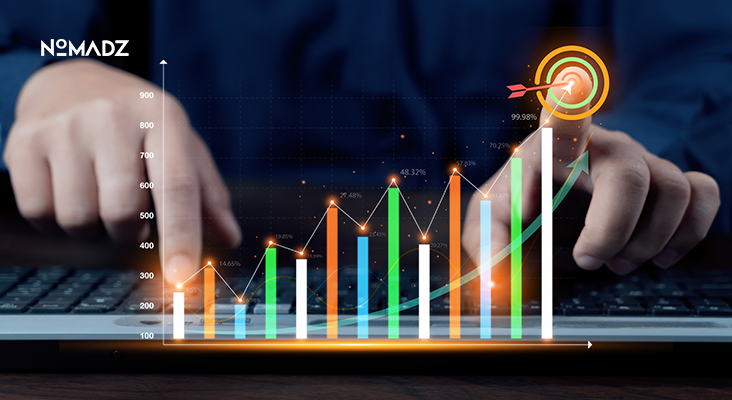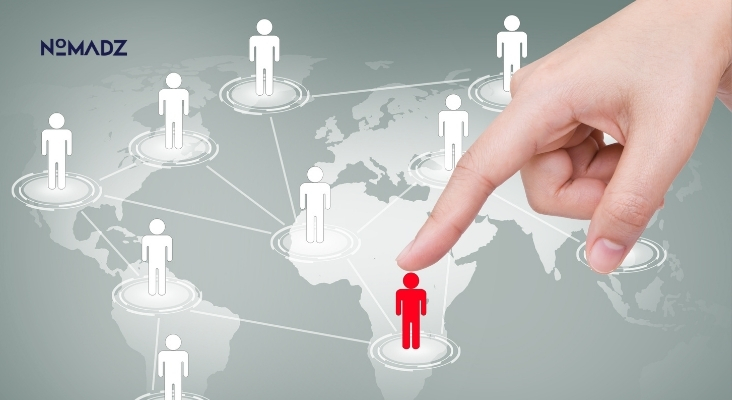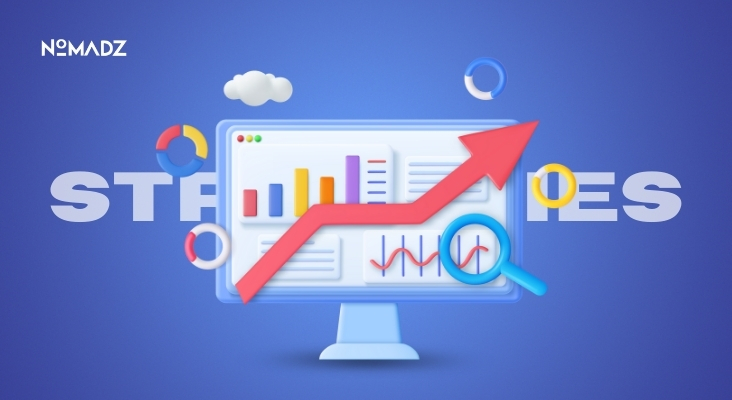Importance of Conversion Rate as Never Before
A conversion rate is the percentage of visits that result in a desired action, such as a purchase, a newsletter subscription, or form completion. It is a handy yet effective scale of effectiveness, measurable in terms of converting the desire developed by your site or campaign into action.
E-commerce has a conversion rate between 2% and 4%, which is considered a good conversion rate in 2025. Any sites that manage to exceed 5.3-11% are considered high performers.
Improving your conversion rate allows you to generate more profits from the traffic you have. The wise application of this measure, whether through paid placements or organic guidance, does not mean spending more. Explore with us more about CVR.
Important KCR benchmarks (2025)
- E-commerce average: 2-4 percent industry-wide, and health and beauty, 2.7 percent, and electronics, 3.6-4.9 percent.
- Email promotion: B2C \~2.8, B2B \~2.4.
- Paid search (PPC): Search ads \~3.75%, Display \~0.8%.
The top 25% of websites convert at a rate of 5.3% or higher, with the top 10% achieving a rate of 11.45% or higher. These conversion examples show what’s achievable when you prioritize testing, UX, and targeting.
Conversion Rate Formula & Conversion Ratio Explained
At its core, the conversion rate formula is:
| Conversion rate = (number of conversions/number of visitors) x 100 |
Out of 1,000 purchasers, 50 will make a purchase, which translates to a 5% conversion rate.
Conversion ratio and conversion rate are terms that are used interchangeably. The conversion ratio may also take the form of a comparison of two rates, such as email versus paid search conversion.
Linking Conversion Rate to Costs & ROI
What is conversion cost? That’s how much you spend to earn each conversion – essentially, cost per action (CPA). When you spend 50,000 rupees to achieve 100 conversions, then CPA = 500. CPA ties back directly to your conversion rate, and vice versa: lower CPA enables better budget efficiency and ROI.
Conversion Rate Digital Marketing Tactics
Here’s a real-life breakdown of conversion rate digital marketing strategies:
- Email remarketing leads with 10.3% conversion on back-in-stock emails.
- SEO traffic converts at a rate of around 2–4%.
- PPC ads show varied performance: auto \~6%, B2B \~3%.
- Display ads are lower (\~0.8%), prompting landing page and UX tuning.
Collected data confirms that marketers emphasize conversion rate as a top KPI—over one-third rank it as their primary focus.
Real-World Conversion Examples
- E-commerce store improves UX – desktop conversion hits 3.2%, mobile 2.8%.
- Health & beauty brands lead with \~2.7% conversion on mobile and desktop.
- PPC campaign: paid search ads get \~3.75% avg CVR; display \~0.77%.
- High performers like the top 10% of Google Ads advertisers reach \~11.45% CVR.
These conversion examples underscore how channel, industry, and UX impact your results.
Boosting Conversion Efficiency
To improve conversion efficiency, focus on:
- A/B testing: headlines, colours, CTA buttons.
- UX improvements: faster load time, mobile-first layouts.
- Landing page relevance: match user intent and offer clarity.
- Trust factors: reviews, badges, clear policies.
- Retargeting & Email: Regain Cart Abandoners or Browsers.
Modest changes can boost your conversion rate by a percentage that would result in significant revenue.
Sales Conversion Rates & Broader Business Impact
Sales conversion rates aren’t just digital-they include call-to-close numbers for B2B. Enhancing your online conversion rate filters more quality leads to sales teams. The result? Better conversion ratio across your funnel.
The more high-quality leads you acquire, the more of your sales team will convert, and the more your acquisition efforts will yield in terms of ROI.
Conclusion
Your conversion rate is the lifeblood of marketing ROI. It is simple to measure, and it has to be tracked, whether you are doing PPC, SEO, email, or video campaigns. By understanding the conversion rate formula, measuring sales conversion rates, and focusing on conversion efficiency, you can significantly improve profitability.
Considering the idea that top sites convert at 5-11%+, there is considerable room to work with – any improvement, no matter how slight, will yield significant results. Use conversion examples and benchmark data to set targets. And always ask: What is conversion cost, and how low can you drive it while maintaining growth?
Also Read: How PPC Management Help You Maximize Your Money in 2025?
FAQs
1. What is conversion efficiency?
Conversion efficiency is the metric that indicates how effective your marketing and sales activity is in converting visitors into customers or leads.
2. How to calculate the conversion rate formula?
To find the percentage, divide the total conversions by the total visitors and then multiply the result by 100.
3. What is conversion cost?
The average money spent to get each conversion, such as a sign-up or a purchase, is known as the conversion cost.
4. What are good sales conversion rates?
Industry-specific: PPC \~3.75%, email \~2.8%, best websites 511%, e-commerce average 244%.
5. Can the conversion rate of digital marketing vary?
Yes, the conversion rates for email, SEO, and PPC are variable; the industry also influences these rates.









Leave feedback about this